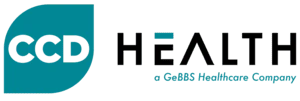Measuring the ROI of End-to-End Patient Scheduling Systems

In healthcare operations, especially for organizations juggling high call volumes and multiple locations, measuring scheduling ROI isn’t as simple as comparing cost to benefit. It’s about looking at the full picture, a full picture that includes direct financial gains, such as saving staff hours or boosting revenue and reducing costs by reducing no-shows, as well as indirect improvements such as smoother patient flow, better provider utilization, and reducing revenue slipping through the cracks.
But achieving these outcomes also depends heavily on how well scheduling fits into the provider’s existing technology environment. Providers rely on a mix of EHRs, RIS platforms, and in-house tools, making scheduling a high-stakes, system-dependent function. That’s why specialized scheduling services that can adapt to and operate within those tools are key since they help streamline operations and improve performance, without requiring a disruptive overhaul of existing systems or workflows.
With returns on the line and operational complexity growing, the question isn’t whether patient scheduling can be optimized, but how to measure its true impact. In the sections that follow, we’ll break down how to define ROI in scheduling, which metrics matter most, and why integration is the key to scalable, efficient patient access.
How to Measure ROI for a Patient Scheduling System
To assess returns as accurately as possible, providers must define and track metrics tied to operational throughput and revenue impact. Data sources may include EHR reports, call center dialer logs, and billing outcomes. Metrics such as cost per appointment, schedule fill rates, and call abandonment inform the effectiveness of the scheduling process. A structured benchmarking approach, before and after implementation, provides clarity on financial outcomes.
Pre- and post-implementation metrics should include:
- Cost per booked appointment: before & after outsourcing
- Patient No-show rate
- Lead time to next available appointment
- Appointment conversion rates
- Revenue per provider FTE
You will also need to factor avoided costs, such as:
- Staff turnover driven by manual or inefficient workflows
- Compliance and documentation errors
- Call abandonment rate due to overloaded queues or routing issues
- Revenue loss from unfilled or double-booked slots
Quantifiable Financial Benefits
Efficient patient scheduling also lowers operational costs by reducing the need for overtime, training, or temporary coverage. A well-managed schedule also improves billing predictability and revenue cycle performance. For instance, a single scheduler reclaiming 90–120 minutes of provider capacity daily adds significant annual downstream revenue.
Operational Efficiency & Cost Savings
Every avoided manual step in scheduling equates to savings. A specialized scheduler cross-trained to manage multi-specialty workflows ensures minimal escalation and efficient call handling. Clients gain the ability to scale volume without scaling payroll proportionately, plus the center can:
- Reduce call handle time via protocol standardization
- Lower training burden for internal staff
- Eliminate redundant follow-up calls and administrative and medical rework
Patient Experience & Quality Metrics
Strong quality assurance measures ensure that every patient interaction is not only efficient but more importantly meaningful. When contact center teams use QA-reviewed scripts and follow standardized workflows, patient confidence increases, directly impacting show rates.
- QA call monitoring and Net Promoter Score (NPS) collection help refine call quality and patient satisfaction constantly. This feedback loop ensures agents are consistently delivering a positive experience that encourages patients to not only keep the existing appointment, but also lay the foundation for a loyal patient for future appointments.
- Using standardized language, combined with real-time access to schedules, provider availability, and insurance data, minimizes confusion and reduces access-related complaints, two common drivers of patient no-shows.
- Predictive scheduling models identify likely cancellations or no-shows ahead of time, allowing teams to proactively fill those slots, reducing idle capacity and maximizing schedule utilization.
- Ongoing quality tracking ensures consistency across calls, strengthens long-term retention, and reinforces the reliability of the scheduling process.
Key Metrics Financial and Operational Teams Should Track
From a finance seat, I advocate for consistent monitoring of unit economics tied to access operations. Every point of patient contact must be monetized or optimized. Offering transparent KPIs and dashboards to help clients assess impact month-over-month.
- Appointments/booked per scheduler per hour
- Cost per booking (before vs. after) per modality
- Net new revenue attributed to FTE deployment
Implementation Path for Optimized Scheduling Systems
We recommend a phased launch (by site, specialty, or volume tier), so the organization can measure success quickly and make confident decisions before scaling.
Recommended implementation strategies:
- Pilot at the highest-volume site
- QA and KPI dashboards built into the workflow
- Weekly review and optimization calls
ROI Forecast Example for a Multi‑Location Center
Let’s look at a simple forecast example based on actual data and use cases from our partners to highlight what’s possible when scheduling inefficiencies are addressed head-on:
For a 20-site provider averaging 200 appointments per day/site, reducing average no-shows by 20% and saving 5 minutes per booking.
Using a benchmark of $20 per hour for labor value, which translates to $800K+ in reclaimed annual value, this provider would gain:
- 5 minutes × 200 appts = ~16.7 hrs/day/site
- $334/day × 20 sites = $6.68K/day
- $6.68K × 20 workdays = $133.6K/month = $1.6M/year gross
- Investment: $400K = 300% ROI
Final Thoughts
Emerging technologies like predictive analytics and AI-driven routing are reshaping what’s possible in healthcare scheduling. But technology alone isn’t the full solution. Services that are trained to work alongside these tools, rather than solely replace them, ensure organizations are truly future-ready. When integrated effectively, these solutions enable:
- Proactive rescheduling
- Smarter load balancing
- Higher patient compliance
- Improved financial and operational performance
Ready to See the Results?
Let us help you unlock measurable ROI from day one. Explore how our specialized patient scheduling and billing solutions integrate seamlessly with your existing systems, reducing no-shows, boosting productivity, and maximizing revenue across every location.

William is the Chief Financial Officer at CCD Health, where he leads the company’s financial planning, strategy, and risk management. He plays a key role in driving CCD’s long-term growth by aligning financial operations with the company’s mission to innovate in the healthcare space.



